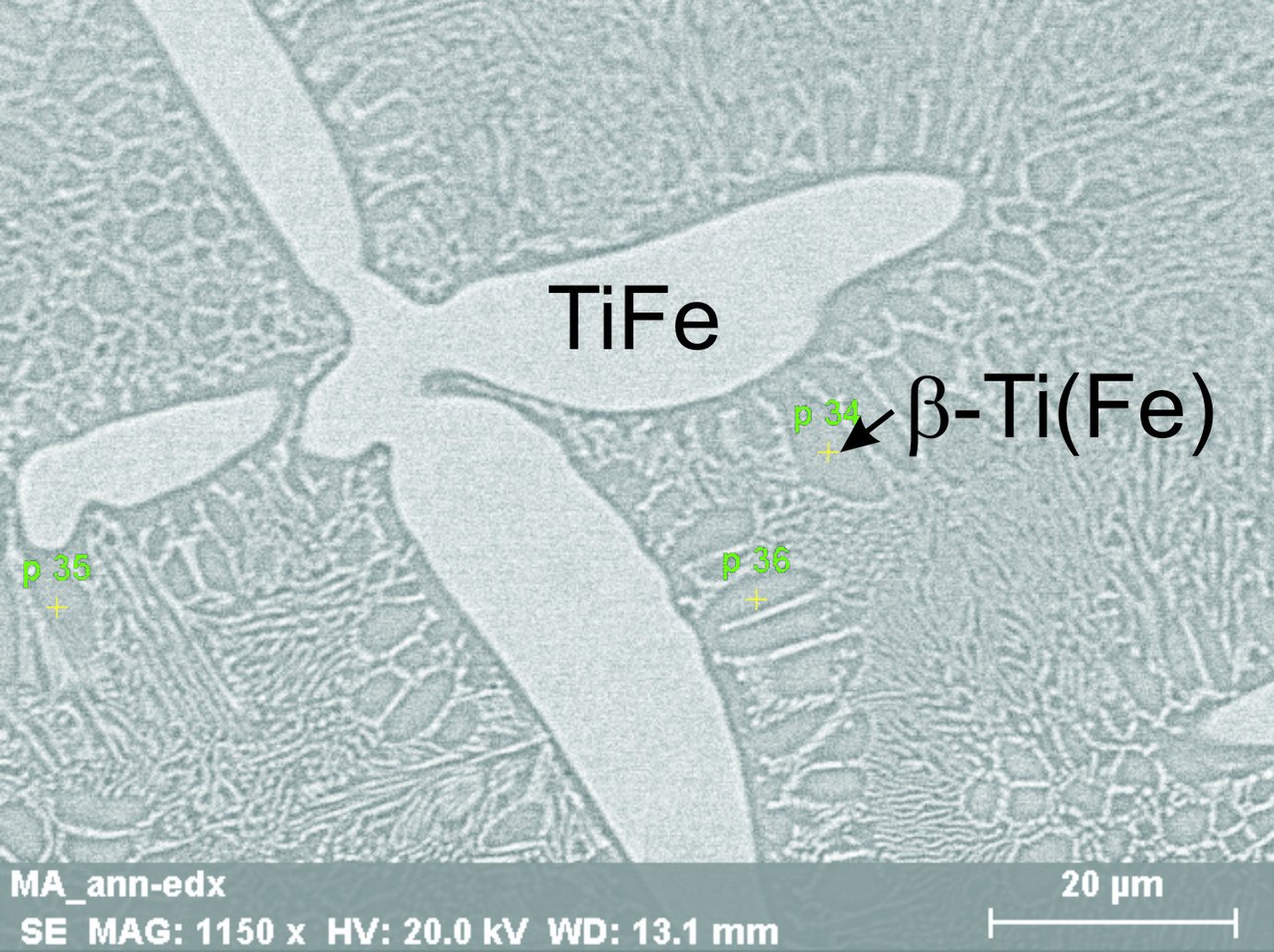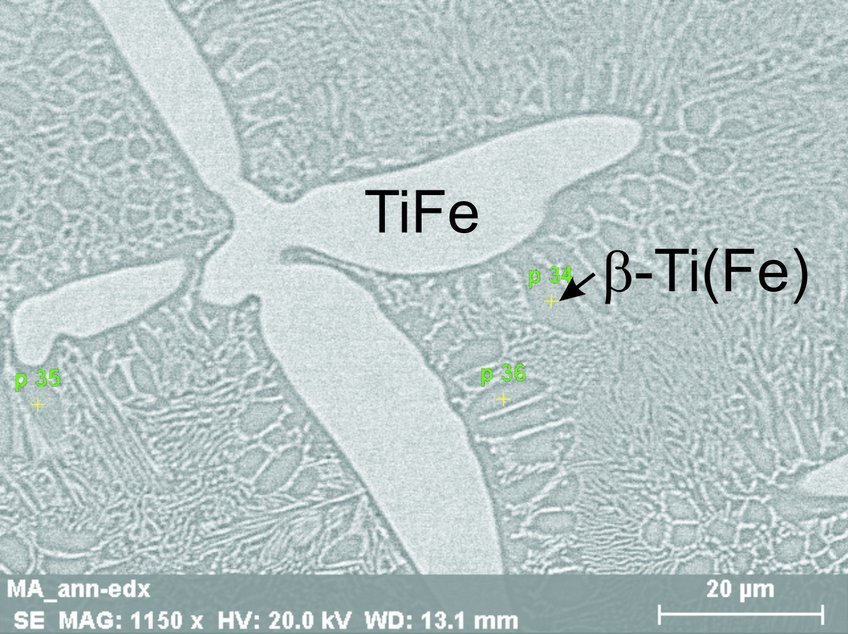Ab initio study of high-ductility & high-strength eutectic Fe-Ti alloys
Eutectic Ti-Fe alloys exhibit a high strength (~1000 MPa), excellent ductility, and sufficient corrosion resistance making them promising candidates for numerous aerospace and automotive applications. Dual-phase Fe-Ti eutectics are composed of a rather brittle FeTi intermetallic phase with the B2 structure and a softer and more ductile β-Ti(Fe) alloy with varying Ti concentrations.
Eutectic Ti-Fe alloys exhibit a high strength (~1000 MPa), excellent ductility, and sufficient corrosion resistance making them promising candidates for numerous aerospace and automotive applications. Dual-phase Fe-Ti eutectics (see Fig. 1) are composed of a rather brittle FeTi intermetallic phase with the B2 structure and a softer and more ductile β-Ti(Fe) alloy with varying Ti concentrations. The latter depends on the cooling rate. Motivated by the fact the β-Ti(Fe) phase cannot be prepared as a single-phase material with varying Ti content making it principally impossible to experimentally probe/measure this phase separately, we study Ti-Fe alloys over a broad range of Ti concentrations using quantum-mechanical calculations.

The project [1] combines ab initio calculations of thermodynamic properties of various single- and poly-crystalline Fe-Ti alloys with studying their elasticity in order to identify the origin of ductility and softness of one of the Fe-Ti phases (β-Ti(Fe)), and stiffness of the other (intermetallic FeTi). Similarly as in the case of a previous study by us on Ti-Nb alloys [3,4] it became possible to identify strong correlations (see Fig. 2) between the three fundamental materials characteristics [4]: (i) atomistic-level electronic structure (specifically the density of states at the Fermi level, DOS(EF)), (ii) thermodynamic stability (quantified by the formation energy), and (iii) macroscopic polycrystalline elasticity (characterized by the value of Young’s modulus).
The ab initio determined thermodynamic, elastic, and diffusion parameters describing both Fe-Ti phases are being used in phase-field simulations in the group of Prof. Emmerich at the University in Bayreuth in order to model the early stages of microstructure formation in Fe-Ti eutectics (see e.g. [5]).
References
[1] DFG-funded project “Scale-bridging studies of the elastic contributions to nucleation and initial microstructure formation in the eutectic system Ti-Fe“.
[2] A. Schlieter, U. Kühn, J. Eckert, W. Löser, T. Gemming, M. Friák, and J. Neugebauer: Anisotropic mechanical behavior of ultrafine eutectic TiFe cast under non-equilibrium conditions, Intermetallics 19, 327-335 (2011).
[3] D. Raabe, B. Sander, M. Friák, D. Ma, and J. Neugebauer: Theory-guided bottom-up design of β-titanium alloys as biomaterials based on first principles calculations: Theory and experiments, Acta Mater. 55, 4475 (2007).
[4] M. Friák, W. A. Counts, D. Ma, B. Sander, D. Holec, D. Raabe and J. Neugebauer: Theory-guided materials design of multi-phase Ti-Nb alloys with bone-matching elastic properties, Materials 5, 1853-1872 (2012).
[5] L.-F. Zhu, M. Friák, A. Dick, B. Grabowski, T. Hickel, F. Liot, D. Holec, A. Schlieter, U. Kühn, J. Eckert, Z. Ebrahimi, H. Emmerich, J. Neugebauer: First-principles study of the thermodynamic and elastic properties of eutectic Fe–Ti alloys, Acta Materialia 60, 1594 (2012).
[6] M. Friák, T. Hickel, B. Grabowski, L. Lymperakis, A. Udyansky, A. Dick, D. Ma, F. Roters, L.-F. Zhu, A. Schlieter, U. Kühn, Z. Ebrahimi, R. A. Lebensohn, D. Holec, J. Eckert, H. Emmerich, D. Raabe, and J. Neugebauer: Methodological challenges in combining quantum-mechanical and continuum approaches for materials science applications, Eur. Phys. J. Plus 126, 101 (2011).
